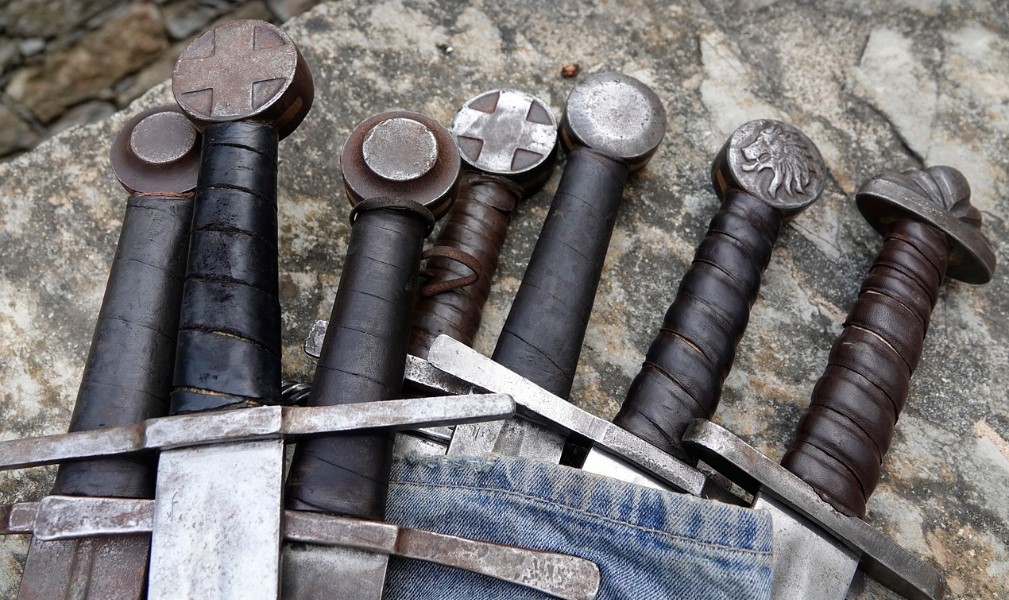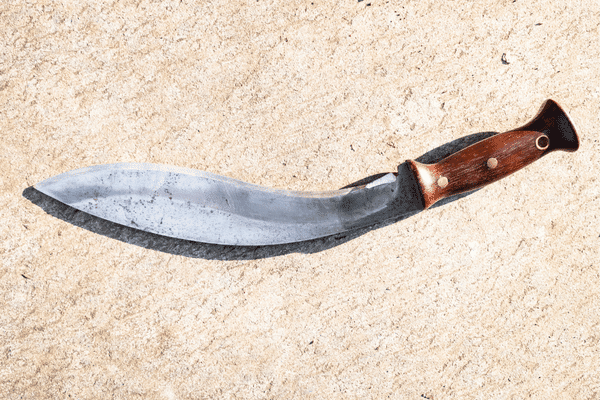Unveiling the Mastery of Viking Swordcraft: A Journey into the Realm of Norse Blades.
Introduction
The Viking sword, an iconic symbol of Norse craftsmanship, is a testament to the ingenuity and skill of the ancient Scandinavian blacksmiths. These blades, often associated with the fearsome warriors of the Viking Age, hold a rich history and possess unique characteristics that set them apart. In this exploration, we delve into the artistry, construction, and legacy of the Viking sword.
I. The Anatomy of a Viking Sword
1. Blade Composition
At the heart of every Viking sword lies its blade, meticulously crafted to blend strength and flexibility. Typically, these swords feature a straight, double-edged design with a fuller, groove that runs down the center. The steel used in forging these blades was a carefully selected mix of iron and carbon, resulting in a weapon that was both durable and sharp.
2. Hilt and Guard
The hilt of a Viking sword was as crucial as its blade. Made from materials like wood, bone, or antler, the hilt provided a comfortable grip for the warrior. The guard, often ornately decorated, served both functional and aesthetic purposes, protecting the hand during combat while showcasing the artistry of the swordsmith.
3. Pommel
The pommel, located at the base of the hilt, added balance to the sword. Viking sword pommels came in various shapes, from simple and utilitarian to intricately carved designs featuring symbols of Norse mythology. This component not only contributed to the sword's functionality but also reflected the personal taste and cultural identity of its owner.
II. The Craftsmanship of Norse Blacksmiths
1. Forging Techniques
Viking swords were crafted using a sophisticated process that involved multiple stages. The steel was heated to high temperatures, hammered, and folded to remove impurities and ensure uniformity. This meticulous forging process resulted in blades with exceptional strength and a distinctive pattern, often referred to as the "Damascus effect."
2. Pattern Welding
One of the most distinctive features of Viking swords is the intricate pattern on the blade surface. Achieved through pattern welding, a technique that involves twisting and layering different metal strands, this method not only enhanced the visual appeal of the sword but also contributed to its structural integrity.
3. Legendary Swordsmiths
The art of crafting Viking swords was not only a technical skill but a revered form of artistry. Skilled blacksmiths were held in high regard, and some even achieved legendary status. Names like Ulfberht are synonymous with exceptional Viking sword craftsmanship, and their creations are highly sought after by collectors and historians alike.
III. The Role of Viking Swords in Warfare
1. Weapon of Choice
The Viking sword was the weapon of choice for Norse warriors during the tumultuous Viking Age (8th to 11th century). Its versatility made it suitable for both slashing and thrusting, providing a strategic advantage in close-quarters combat. The combination of speed, maneuverability, and cutting power made it a formidable tool on the battlefield.
2. Symbol of Status
Owning a finely crafted Viking sword was not only a matter of practicality but also a symbol of status and prestige. The intricate details of the sword, from its hilt to its blade, often conveyed the social standing and wealth of its owner. It was not uncommon for chieftains and noble warriors to invest significant resources in acquiring a masterfully crafted sword.
IV. Legacy and Influence
1. Cultural Significance
The legacy of the Viking sword extends beyond its functionality in battle. These blades are deeply embedded in Norse mythology and sagas, where legendary heroes wielded enchanted swords with names like Gram and Tyrfing. The cultural significance of the Viking sword is evident in its representation as a symbol of honor, bravery, and the warrior spirit.
2. Influence on Contemporary Culture
Centuries after the Viking Age, the allure of the Viking sword persists in popular culture. From movies and literature to modern replicas, the iconic design of these swords continues to captivate audiences worldwide. The influence of Viking swords is not just confined to history books; it lives on in the imaginations of those fascinated by the Norse legacy.
Conclusion
The Viking sword stands as a testament to the craftsmanship, skill, and cultural identity of the Norse people. From the intricacies of its forging to its role in the hands of Viking warriors, these blades carry a rich history that continues to captivate enthusiasts and historians alike. As we unravel the mysteries of these iconic weapons, we gain a deeper understanding of the artistry that shaped the Viking Age and left an indelible mark on the annals of history.









Comments
Post a Comment